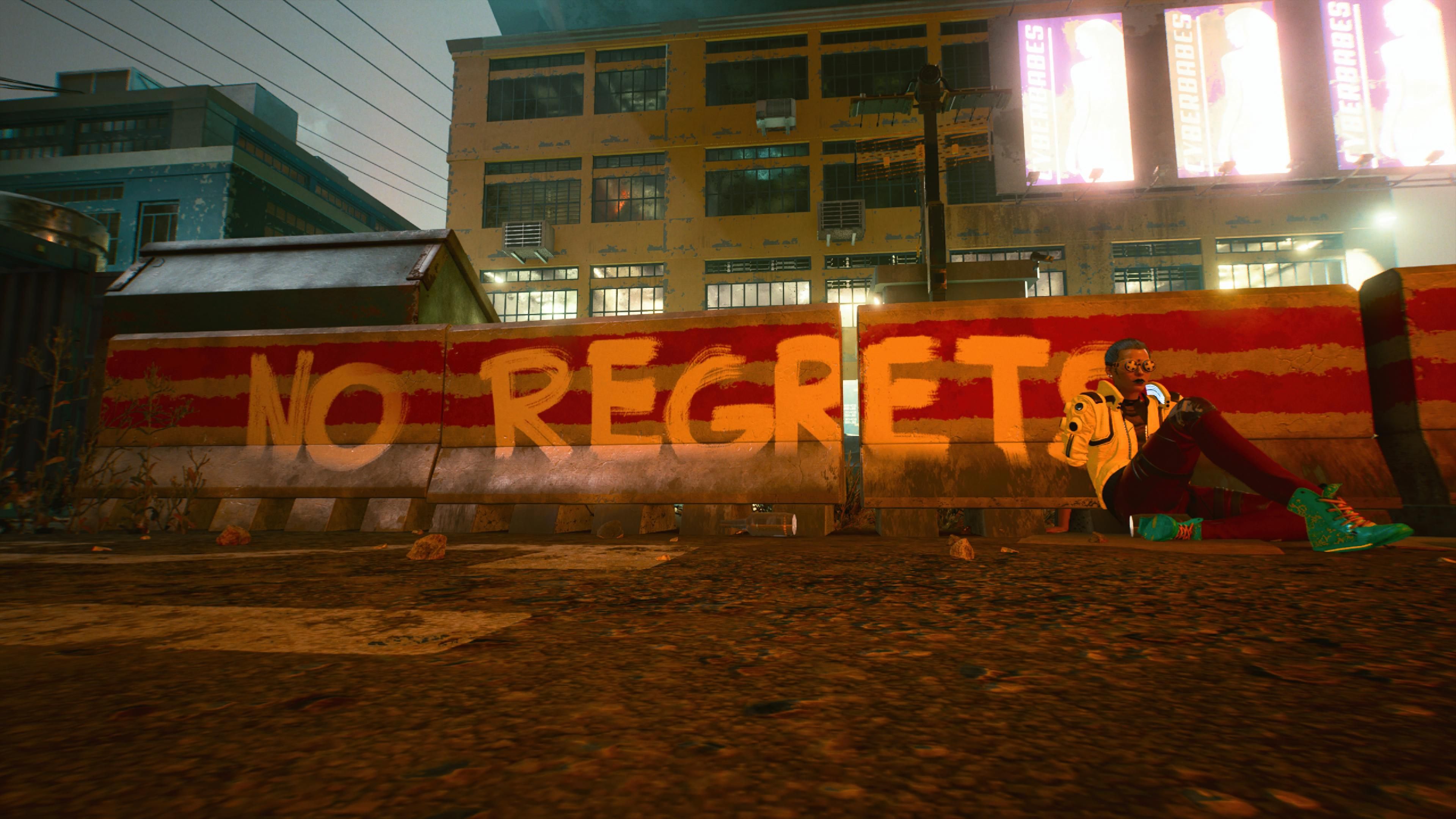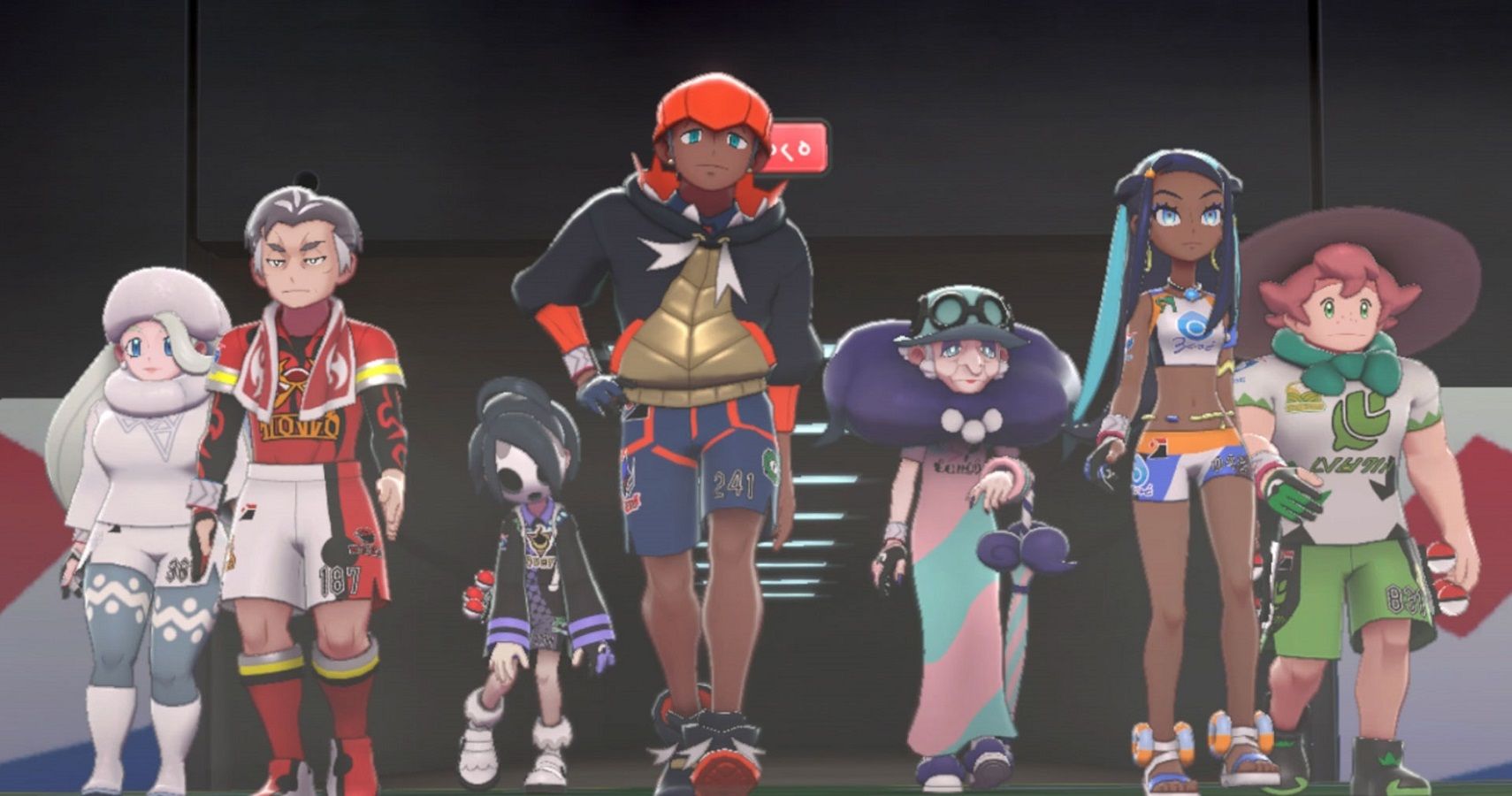My thoughts on Cyberpunk 2077 could best be described as ‘mixed’, and I think the feeling is mutual. I love the characters, especially the minor ones, but found the story lacklustre, the Yellow Peril tropes dated, and the satire – what little there was to be had – weak and hypocritical. It’s occasionally brilliant, occasionally terrible, and often a surprisingly generic mix of the two. Take all these thoughts, plus the context that I’ve played through the game twice, racking up over 100 hours in Night City, and you’ll get an idea of my confusion around Cyberpunk 2077.
As for Cyberpunk reciprocating, it offers me a character creator that allows me to create a body type more similar to my own than any triple-A game has previously, and features Claire, one of the most vibrant and nuanced transgender characters in gaming – but it houses these in a very binary world with transphobic imagery on posters and genders my voice. Take this, plus its marketing that consistently catered to the worst elements of its fanbase during the promotional cycle, and it starts to look like Cyberpunk 2077 is confused about me, too. Oh, and most importantly, even the best compliment you can give it is ‘it’s amazing when it works’ – talk about a mixed bag.
But actually, I don’t want to talk about it. I’ve said pretty much all I need to say on the big issues around Cyberpunk 2077, and as the dust settles, I think there’s more value in exploring the smaller avenues of Night City. In most cases, these smaller avenues make for ideal shooting locations for an in-game fashion shoot – as does pretty much everywhere else in Cyberpunk 2077. With a detailed photo mode that allows you to reposition your character and pose them alongside the usual filters and finer details, plus hundreds of different fashion items, this is the optimal way to play Cyberpunk 2077. Not with bullets or blood or a brain being slowly taken over by a terrorist – but with fashion, darling.
You can’t preview the clothes, which is annoying, but if you do a few odd jobs for the cops and don’t waste eddies on cars, you can just buy up most stores in one swoop. Once you own the outfits, either by buying them or stealing them from your foes’ corpses, you’ll find a surprisingly wide range of fashion choices for a game that doesn’t even let you get a haircut. The hats suck, but in every other category you’ll find something to die for… or, perhaps more accurately, kill for.
Also, while some NPCs clearly need another round of polish, others are gorgeous, and a testament to how good Cyberpunk 2077 could have looked with just one or two more delays. Would the game ever be fixed to the point where I personally fell in love with it? Doubtful, but one glance at the amazing NPCs at the bar in Arasaka Tower is enough to convince me that there’s a better game hidden in here somewhere.
It’s not just that the game’s basic functions lend themselves to fashion though. Fashion can be oversimplified as just nice clothes that look nice, but it’s an artform all of its own. These fashion shoots in Cyberpunk 2077 are not Natalie Portman advertising Dior. They’re Harry Styles in a dress on the cover of Vogue. They’re Stormzy’s stab vest, Beyonce’s Black Panther couture, Sasha Velour’s… everything. They’re rebellion. Subversion. Despite the game giving us the tools to play it this way, it is so clearly not designed to be played this way. You’re encouraged to trade in your best togs for something much uglier and bulkier with slightly better defence points; you’re encouraged to throw old clothes away once their stats no longer aid you in your quest to kill everyone in sight. Cyberpunk 2077 was never supposed to be a fashion shoot simulator, and that’s what makes it an ideal one.
The locations of Night City become reinvented through the fashion shoot lens. For the most part, I think the city fails to distinguish itself. You have the desert of the Aldecaldos, and the fairground out in Pacifica, but during the main story, the game struggles to make the most of these locations, and the inner city hotspots all blur into one. Looking closer, you start to notice smaller details, and you go to explore locations the main story path never suggests you visit. Dark alleyways become catwalks. Shootout arenas become studio floors. The game becomes what you want it to be, not what it thinks itself to be.
I mentioned that I’ve played Cyberpunk 2077 twice, totalling over 100 hours, but that’s not an equal split. The first time I trundled through in maybe 25 hours, mostly completing the main objectives and the few side quests that felt related to the story. I didn’t enjoy it much. I didn’t walk far enough outside of the main path, and I didn’t like the gameplay, the story, or its general attitude. I went back purely because I’d heard the photo mode – which I’d almost entirely neglected the first time – was one of the best in gaming. That’s what I spent my second playthrough doing. I also swept up every side quest (apart from two that bugged out, but what else is new?) and experienced three different endings. This playthrough alone almost hit triple figures, and while I’m still not a fan of the base game, it did get better the more I explored, and thinking of the quests as ways to let the photo mode shine made it all easier to put up with.
I didn’t really want to be playing Cyberpunk 2077 again, and Cyberpunk 2077 didn’t seem to want me to play it. I clearly wasn’t the target audience, and I’d already beaten it once – the game wasn’t even fixed yet, it was too soon for a second playthrough. Like I said, our feelings for each other are mixed at best. We don’t see eye to eye on a lot of things, but when the cameras are rolling, we put all that aside for the sake of fashion.
Next: Why Yakuza 0 Has The Best Opening Theme Of All Time
- TheGamer Originals
- PC
- Cyberpunk 2077
- Xbox One
- cd projekt red
- ps4
- CD Projekt
Stacey Henley is an editor for TheGamer, and can often be found journeying to the edge of the Earth, but only in video games. Find her on Twitter @FiveTacey
Source: Read Full Article



